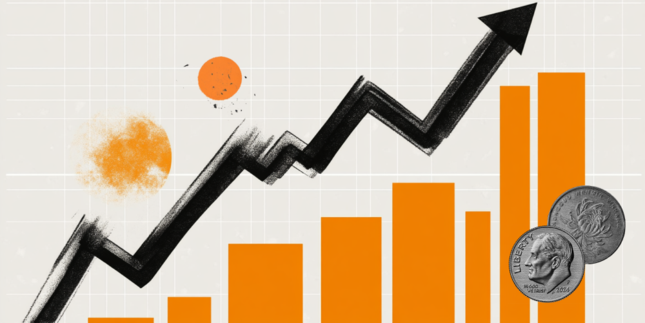AUD/USD rejected at key resistance ahead of Australian inflation data
- Aussie recovers from Friday’s strong decline as US Dollar slips.
- Trump’s next tariff moves keep the global trade outlook on edge.
- RBA’s cautious stance on further easing resonates with markets.
- Investors watch upcoming Australian inflation data for policy cues.
AUD/USD managed to regain some upside traction and reverse Friday’s strong decline, revisiting the vicinity of the 0.6400 mark but then buyers quickly rejected it. During the American session, United States (US) President Donald Trump confirmed tariffs against Mexico and Canada’s goods but didn’t offer further details on its policy plans on China.
Daily digest market movers: Aussie eyes RBA CPI outlook as trade tensions linger
- US President Donald Trump indicated possible 25% tariffs on cars, pharmaceuticals, semiconductors, and lumber, potentially starting in the coming weeks, which could reignite global trade worries.
- The Australian Dollar (AUD) trades in a cautious stance as market participants anticipate monthly Consumer Price Index (CPI) data for January, projected to accelerate by 2.6% from December’s 2.5%.
- Last week, the Reserve Bank of Australia (RBA) trimmed its Official Cash Rate (OCR) for the first time since November 2020 but reiterated that its fight against inflation is not complete, offering cautious guidance on further easing.
- In a quieter start to the trading week, the US Dollar (USD) alternated between minor gains and losses.
AUD/USD technical outlook: Momentum stalls at 100-day SMA as indicators show signs of fatigue
The AUD/USD pair mildly rose to a higher zone on Monday, but it encountered robust resistance at the 100-day Simple Moving Average, leading to a partial retracement. The Relative Strength Index (RSI) sits in the upper positive territory yet is declining, suggesting that the bulls might be losing momentum. Meanwhile, the Moving Average Convergence Divergence (MACD) histogram prints flat green bars, reinforcing the idea of a waning uptrend.
While the pair remains above its 20-day Simple Moving Average, any move failing to maintain traction above the 100-day SMA does not necessarily indicate a structural shift. The pair could either slip lower or oscillate between the referenced resistance and the 20-day SMA, depending on fresh data and evolving trade narratives.
RBA FAQs
The Reserve Bank of Australia (RBA) sets interest rates and manages monetary policy for Australia. Decisions are made by a board of governors at 11 meetings a year and ad hoc emergency meetings as required. The RBA’s primary mandate is to maintain price stability, which means an inflation rate of 2-3%, but also “..to contribute to the stability of the currency, full employment, and the economic prosperity and welfare of the Australian people.” Its main tool for achieving this is by raising or lowering interest rates. Relatively high interest rates will strengthen the Australian Dollar (AUD) and vice versa. Other RBA tools include quantitative easing and tightening.
While inflation had always traditionally been thought of as a negative factor for currencies since it lowers the value of money in general, the opposite has actually been the case in modern times with the relaxation of cross-border capital controls. Moderately higher inflation now tends to lead central banks to put up their interest rates, which in turn has the effect of attracting more capital inflows from global investors seeking a lucrative place to keep their money. This increases demand for the local currency, which in the case of Australia is the Aussie Dollar.
Macroeconomic data gauges the health of an economy and can have an impact on the value of its currency. Investors prefer to invest their capital in economies that are safe and growing rather than precarious and shrinking. Greater capital inflows increase the aggregate demand and value of the domestic currency. Classic indicators, such as GDP, Manufacturing and Services PMIs, employment, and consumer sentiment surveys can influence AUD. A strong economy may encourage the Reserve Bank of Australia to put up interest rates, also supporting AUD.
Quantitative Easing (QE) is a tool used in extreme situations when lowering interest rates is not enough to restore the flow of credit in the economy. QE is the process by which the Reserve Bank of Australia (RBA) prints Australian Dollars (AUD) for the purpose of buying assets – usually government or corporate bonds – from financial institutions, thereby providing them with much-needed liquidity. QE usually results in a weaker AUD.
Quantitative tightening (QT) is the reverse of QE. It is undertaken after QE when an economic recovery is underway and inflation starts rising. Whilst in QE the Reserve Bank of Australia (RBA) purchases government and corporate bonds from financial institutions to provide them with liquidity, in QT the RBA stops buying more assets, and stops reinvesting the principal maturing on the bonds it already holds. It would be positive (or bullish) for the Australian Dollar.
Forex News
Keep up with the financial markets, know what's happening and what is affecting the markets with our latest market updates. Analyze market movers, trends and build your trading strategies accordingly.

























